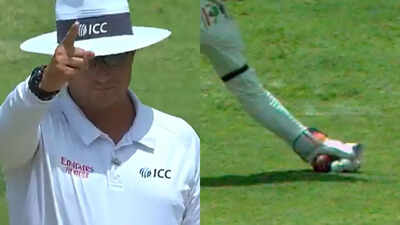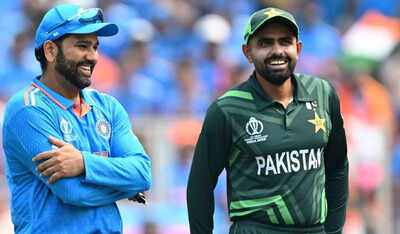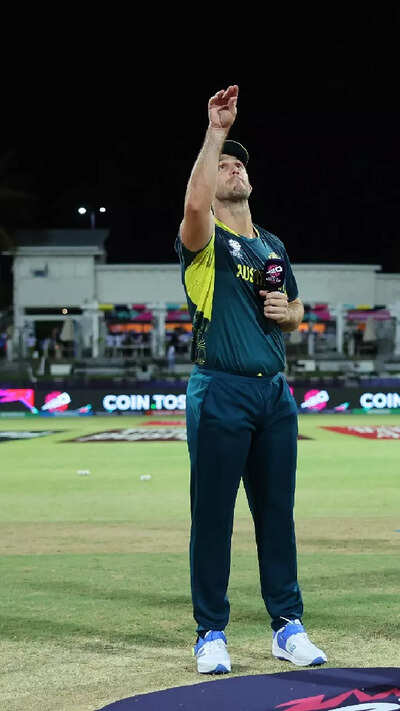Bridgetown, Barbados – The first Test between the West Indies and Australia at Kensington Oval has been marred by a series of controversial decisions from the third umpire, Adrian Holdstock. These calls have ignited debate and significantly impacted the flow of the match.
West Indies seized an advantage on Day 2, leaving Australia at 92/4 in their second innings, a mere 82 runs ahead. However, the match's narrative has been heavily influenced by the umpiring controversies spanning both days of play.

Australia were initially dismissed for 180, with the West Indies responding with 190. The game hangs in the balance, with Travis Head and Beau Webster currently at the crease for Australia.
The initial controversy erupted on Day 1 when Travis Head was deemed not out. Replays suggested a clean catch by the wicketkeeper off Shamar Joseph's delivery. Despite the visual evidence, the third umpire asserted insufficient proof of a clean catch.
Another questionable incident unfolded during the first over of Day 2. Roston Chase survived an LBW appeal from Josh Hazlewood. A distinct spike appeared before the ball made contact with the bat, yet the third umpire granted Chase the benefit of the doubt.
Chase capitalized on this reprieve, scoring 44 runs before succumbing to another contentious decision. He was adjudged LBW to Pat Cummins. Despite Chase's review, citing a visible deviation near the bat, the original decision stood.
Ian Bishop, commentating on the match, voiced his disagreement, stating, "I disagree with the decision, I disagree with the technology, I thought he hit that but somehow, it's worked against Roston Chase."

Further fueling the controversy, Shai Hope was given out caught behind by Alex Carey. Replays cast doubt on the legitimacy of the catch, suggesting the ball might have touched the ground.

Australia now faces the challenge of forging a substantial partnership on Day 3 to regain control of the Test match.
Newer articles
Older articles
 India Enters New Space Age as Astronaut Shukla Joins ISS Mission
India Enters New Space Age as Astronaut Shukla Joins ISS Mission
 X Cracks Down: Half a Million Indian Accounts Suspended for Policy Breaches
X Cracks Down: Half a Million Indian Accounts Suspended for Policy Breaches
 Google Unveils Strategy to Combat Misinformation, Boost Voter Access in India's 2024 Elections
Google Unveils Strategy to Combat Misinformation, Boost Voter Access in India's 2024 Elections
 Hair Oil vs. Hair Serum: Which is the Right Choice for Your Hair?
Alternatively:
Unlock Your Best Hair: Choosing Between Hair Oil and Serum for a Healthy Mane
Hair Oil vs. Hair Serum: Which is the Right Choice for Your Hair?
Alternatively:
Unlock Your Best Hair: Choosing Between Hair Oil and Serum for a Healthy Mane
 Vijay Sethupathi Apologizes Amid Controversy Over Son's Film 'Phoenix'
Vijay Sethupathi Apologizes Amid Controversy Over Son's Film 'Phoenix'
 Bollywood's 'Swades' Anthem Joins Axiom-4 Mission: Indian Astronaut's Playlist Honors Heritage in Space
Bollywood's 'Swades' Anthem Joins Axiom-4 Mission: Indian Astronaut's Playlist Honors Heritage in Space
 New York Assemblyman Zohran Mamdani's Style: 5 Lessons in Authenticity and Heritage
New York Assemblyman Zohran Mamdani's Style: 5 Lessons in Authenticity and Heritage
 Colon Cancer: Don't Ignore These 5 Early Warning Signs
Colon Cancer: Don't Ignore These 5 Early Warning Signs
 TSMC Regains Top 10 Global Value Ranking Amid AI Boom
TSMC Regains Top 10 Global Value Ranking Amid AI Boom
 Android Users Urged to Update Devices Amid High-Severity Security Flaws: Government Issues Warning
Android Users Urged to Update Devices Amid High-Severity Security Flaws: Government Issues Warning